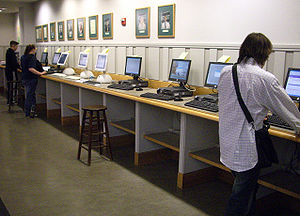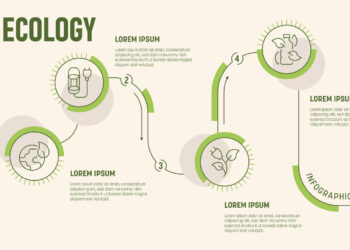- Image via Wikipedia
David Seaman from Dartmouth College Library presented yesterday at a session where I also spoke. The topic? E-books and e-reading in academia.
David gave a terrific presentation, contextualizing the e-reading “fits and starts” very well, and giving an inside look at how Dartmouth’s experiences may foreshadow larger changes in user preferences.
One major observation he made is that Apple has become the de facto standard on their campus, offering a free iPod Touch to any student who buys an Apple laptop. These multi-use devices prove very useful to students, and the integrations invite usage. Single-use devices like Amazon‘s Kindle are never seen on campus. Kindle’s are “what my Dad uses.” Ouch.
That said, Dartmouth is undertaking a “Kindle library loan” experiment, loaning out Kindle’s to see what happens. This experiment should be complete later this year or early next year, if my memory serves.
David also did a nice job of pointing out the limitations of all these devices — annotation, collaboration, and sharing. The experience of reading on these is essentially a solitary one, and making notes and collaborating is trying at best.
However, Dartmouth is also finding a great deal of interest in e-reading among students. Many already use e-texts, mainly for non-linear (reference and research) reading, and a growing corpus of materials is emerging.
Given the broad acceptance of e-reading, but the preference for multi-purpose devices, David indicated that he thinks e-books and e-reading is now a real part of the landscape, and that its adoption will only increase, perhaps quickly.
For my part, I covered the available and upcoming devices here and abroad, platforms, companies, commercial models, and my own experience as an author whose novel is available in e-book form.
I also talked about the pending launch of Plastic Logic’s reader, showing the video below:
The upcoming Kindle DX seems close to the “killer” e-reading device, with its format and capabilities getting much closer to what everyone’s been imagining would emerge. Wireless integration with the Amazon storefront is what makes these devices so useful. That storefront is also what Amazon is not going to concede without a fight — hence, their release of a Kindle application for the iPhone and acquisition of Lexcycle’s Stanza.
E-books have only provided about 2% of the sales of my novel. It didn’t cost me anything to make it happen, but it’s a very minor part of commercial publishing these days. That said, services like Smashwords, Scribd’s new e-bookstore, and the rapid adoption of devices that support e-reading — along with trends among users — indicates that the Age of e-Reading might now be upon us.
Discussion
5 Thoughts on "E-reading in Academia"
The big question for the Amazon Kindle storefront–will they allow purchases through the iPhone (and other smartphone) apps, rather than having to go to a browser. The convenience and elegance of using an app specifically designed for your device is obvious. The issue is that Apple (and presumably other smartphone manufacturers) is going to charge Amazon a 30% fee from every purchase made through an app. Quite the dilemma for Amazon, is it better to inconvenience customers and keep all the money, or will using an app mean at least a 30% increase in sales to cover Apple’s cut?
Once the 3.0 version of iPhone software is out, they will, from what I hear. That will enable subscriptions, in-app e-commerce, etc. So, you can buy things in an application, whether it’s a book, a new game level, an avatar, or a subscription. I think the cut between Apple and Amazon will be worked out somehow. They’re both big, and probably need each other in this space.
i’ve heard there’s an updated version of the iphone/pod touch amazon ‘kindle’ software that does integrate access to the store. have not explored this, so have no idea of the functionality.
now that public awareness of devices for e-reading is on the rise — regardless of the device to be employed (i-thing, netbook, kindle, sony whatever) — i am wondering whether the mental ‘dots’ will start to be more firmly connected by individuals as, one by one, it comes time for them to buy new inkjet cartridges and reams of printer paper.
i’m a kindle and ipod touch owner. i read on both devices, as i never bring my kindle into my workplace. i just finished a class for which i did nearly all of the reading on my touch, until my kindle showed up and i switched to that. i printed exactly 4 readings — all scans of older articles from print journals, and none more than 8 pages in length. i *hate* printing articles. i hate reading on 8-1/2 x 11″ paper. i hate that my printer never craps out when i’m printing a recipe off of epicurious and always does when i’m trying to print something important as an afterthought, ‘just quick’ to read on the go.
it was a pleasure to give my money to apple and amazon for devices, rather than to canon or hp for freaking inkjet cartridges, and to office depot for paper. i can’t be the only one *so* ready to cut down on printer-dependence.

![Reblog this post [with Zemanta]](http://img.zemanta.com/reblog_e.png?x-id=936d1ac0-b282-4c6d-94a9-a7232c73b634)


